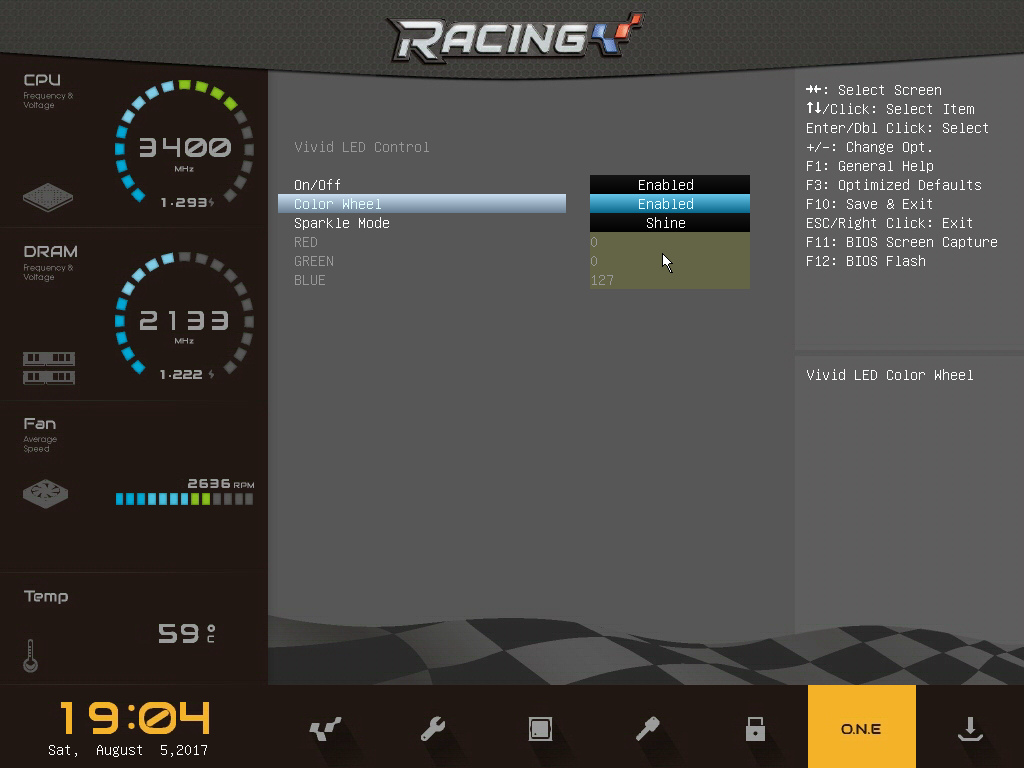Biostar X370 GTN Mini-ITX Ryzen Motherboard Review
Why you can trust Tom's Hardware
Firmware & Software
UEFI
Following the Racing brand’s theme, the GTN continues where the Biostar GT7 left off and provides a virtually identical user experience. As with most major manufacturers on the market now, Biostar implements a revision of the AGESA 1.0.0.6 code base into its UEFI for improved memory stability.


Biostar listened to its fans and with this update tweaked its methods for implementing overclocking, using a multiplier-based setting rather than the previous FID and VID settings in the Custom Pstates menu. Overall, the UEFI is serviceable but lacks some of the glitz and glam that other vendors provide.


We kind of breezed through some of the extra items in the previous Biostar AM4 UEFI, so let’s jump into those. Fan control is accessible through the Advanced tab, where various control modes can be defined to use either preset thresholds or custom fan curves. Fan calibration is also included in this menu where the UEFI determines the upper and lower RPM thresholds. What it lacks in graphical finesse, it makes up for in practicality, a common theme for the GTN UEFI. If the Vivid LED DJ application is too clunky from the OS, users can tweak the patterns and colors of the on-board and attached LEDs within the O.N.E. menus.



PC Health Status and SATA Configuration in the Advanced menu show the typical system voltage measurements and devices connected to the system. The Compatibility Support Module Configuration remains untouched in our testing. CPU tweaking and memory overclocking are available through the O.N.E. menus, which we will cover in just a bit.
MORE: Best Motherboards
MORE: How To Choose A Motherboard
MORE: All Motherboard Content
Get Tom's Hardware's best news and in-depth reviews, straight to your inbox.
-
amateramasu Jacob, I've been planning a build around the Gigabyte AB350N, which board would you recommend? This is going into a Bitfenix Prodigy, so I'm not likely to get a larger mobo.Reply
Thanks,
amateramasu -
TheTerk At <$90 the Biostar X370 GTN should work fine for a smaller budget system (if you don't need WiFi). Given your case choice, just make sure your cooler is within the Biostar specifications and will fit in your case.Reply
If you can catch the AB350N on sale, it's only about $10 more expensive than the GTN. You get more features with the AB350N and a cleaner product (which is why I rated it higher in my other article). Otherwise, you might want to save the $15-$35 and put it towards another component. -
Onus Nice review. This, along with the Biostar boards I reviewed last year or the year before have been demonstrating a consistency that Biostar previously lacked. I think they've stepped up to where they finally deserve some serious consideration.Reply -
siman0 Here is my build with this board. Its not bad but im going to be swaping over to the asrock x370 board. It has wifi, also this board for some reason doesnt like to overclock well.Reply
https://pcpartpicker.com/b/9tQZxr -
Valantar I've had this board since around June, and I'm very happy with it except for one thing: fan controls. While the option is there, it's exceptionally unintuitive (okay, you set a start value and a value for how quickly rpm increases with temperatures, but there's no way at all to tell what these numbers actually mean, nor how high they go), and communication between BIOS settings and Biostar's Racing GT app seems nonexistent. The app doesn't have an option to start automatically on boot (and won't, even if I set it to do so through the startup folder, probably due to it requiring admin privileges), and before it starts, my CPU fan (well, the fan on the radiator that's directly after the CPU in the loop) runs at full speed. Rather annoying.Reply
Other than that, the board runs stable, with no real issues. My RAM (2x8GB TridentZ 3200C16, so not B-die) some times refuses to POST at 3200 XMP (tries five times, then the UEFI resets itself automatically), but at 2933 it's rock solid. The SATA connectors don't bother me as I don't have more than two SATA devices and thus I only use the outer headers, and even if the USB 2.0 header is placed oddly, I didn't have any issues routing the cable to it (tucking it next to the RAM helps keep it tidy too). Same goes for front panel audio. All other headers are far better placed on this board than any other AM4 ITX board IMO.
As for the people here considering other boards: if you need WiFi, go for it, but consider the board layouts before making a decision. Having the 24-pin along the top edge of the board makes it impossible to route the cable properly in many cases, and some boards even have the EPS connector some place between the CPU, rear I/O and PCIe slot. That's definitely not a good placement. Not to mention that this IIRC is the only AM4 ITX board with USB-C. -
paull29724 I've noticed some positive reviews of Biostar lately, and heavily considering getting this board for my mini itx build. For 79.99 on newegg now, tempted just to get it now and build it after I get my case. Anyone can suggest a good case for this build?Reply